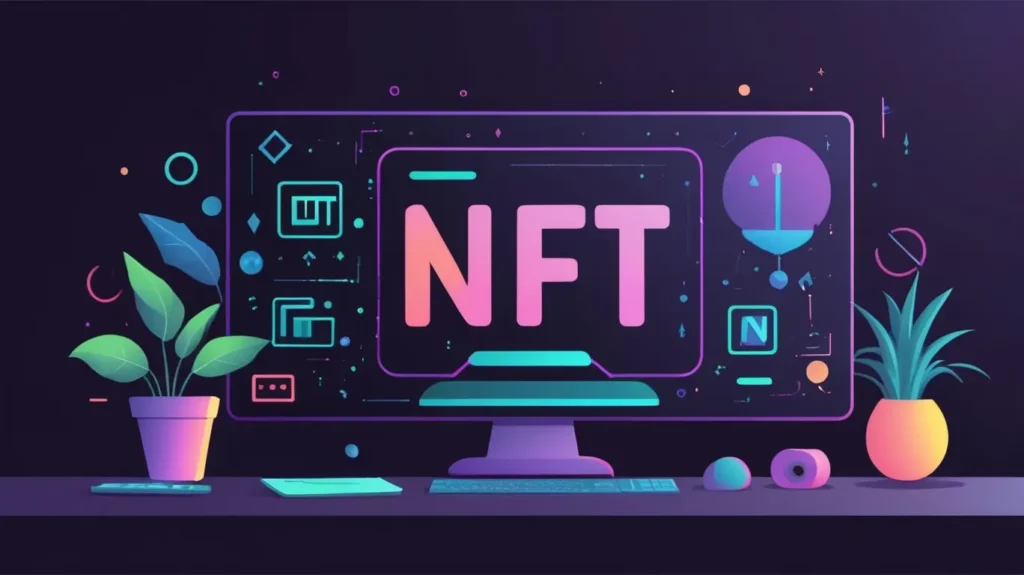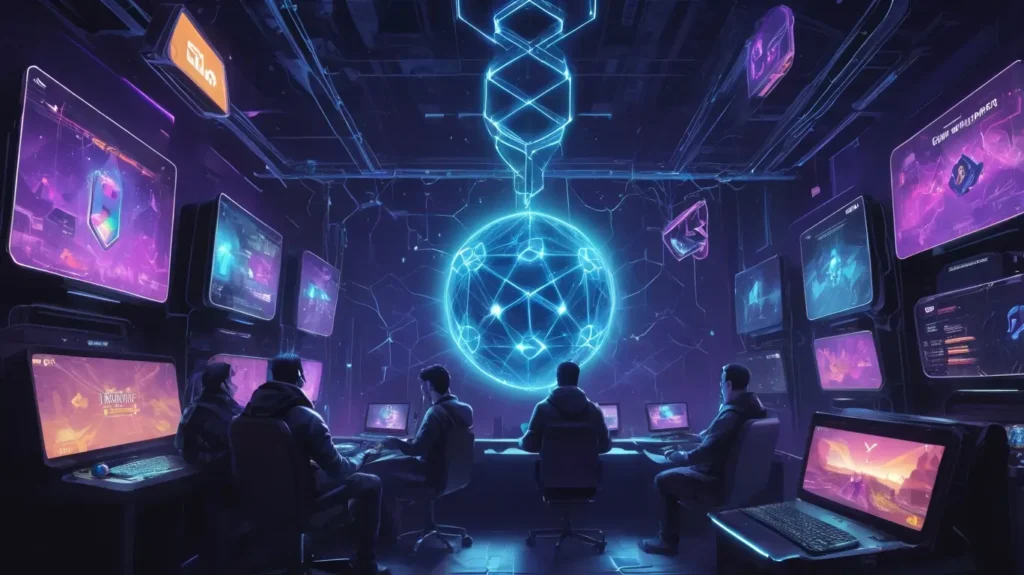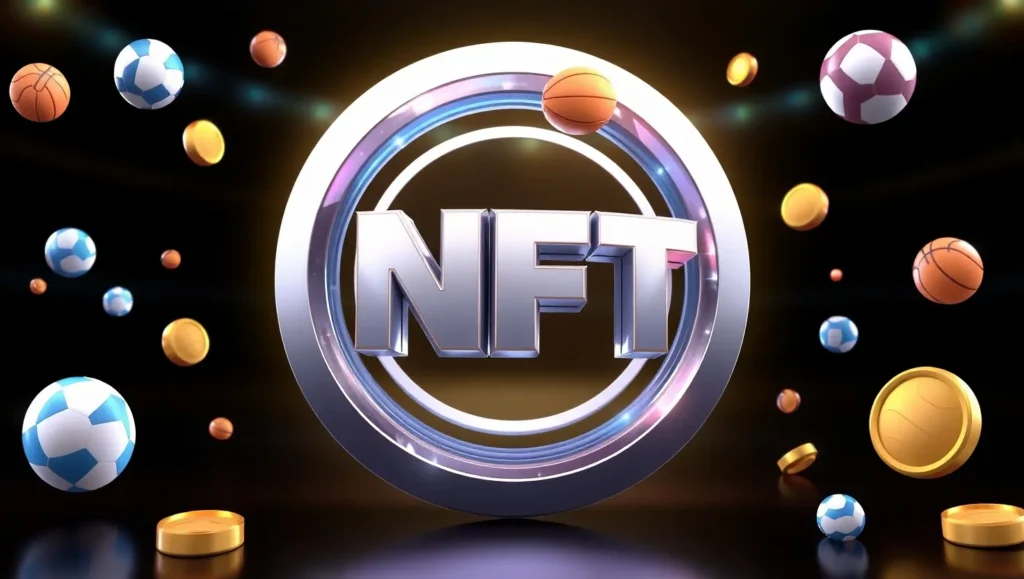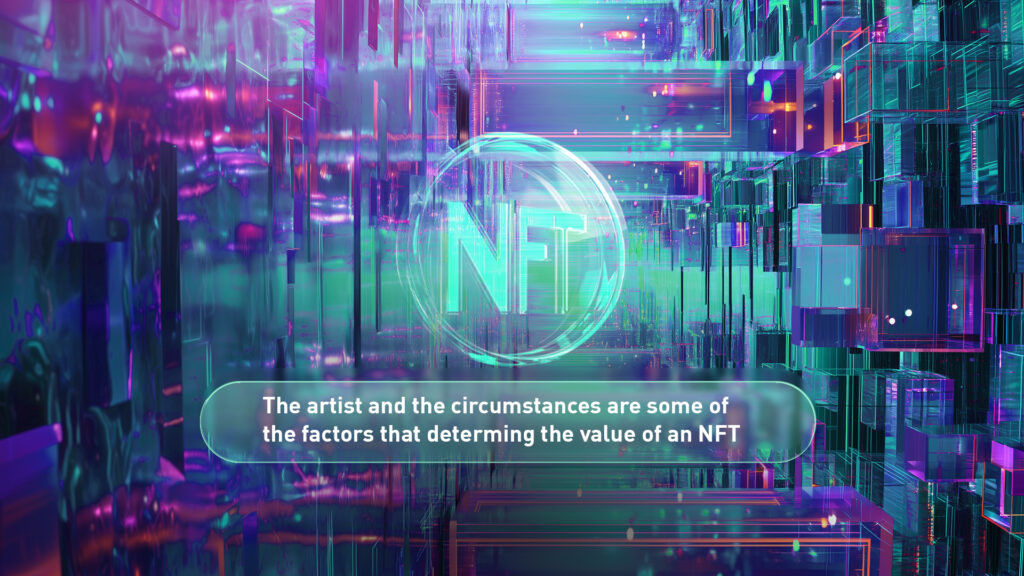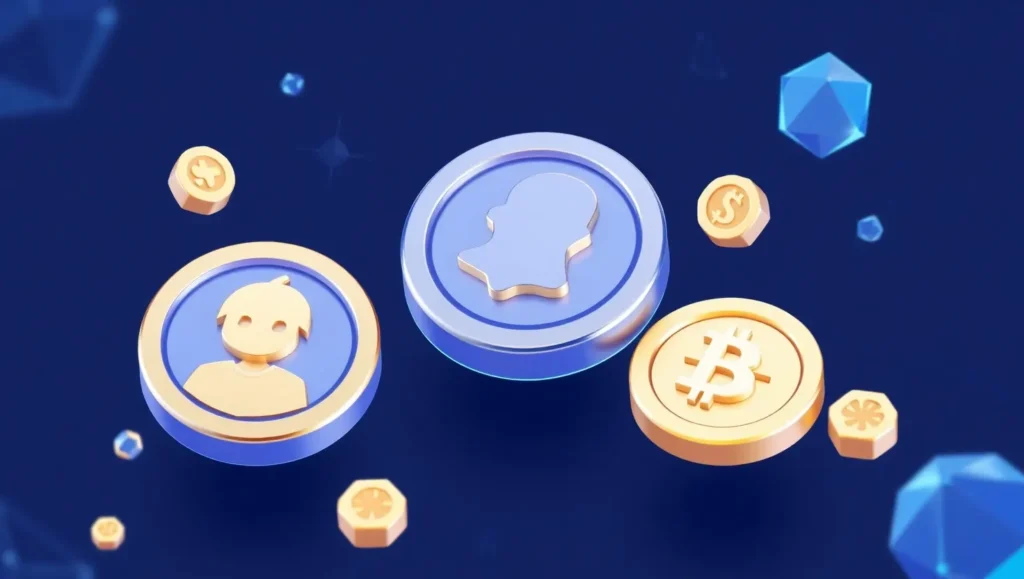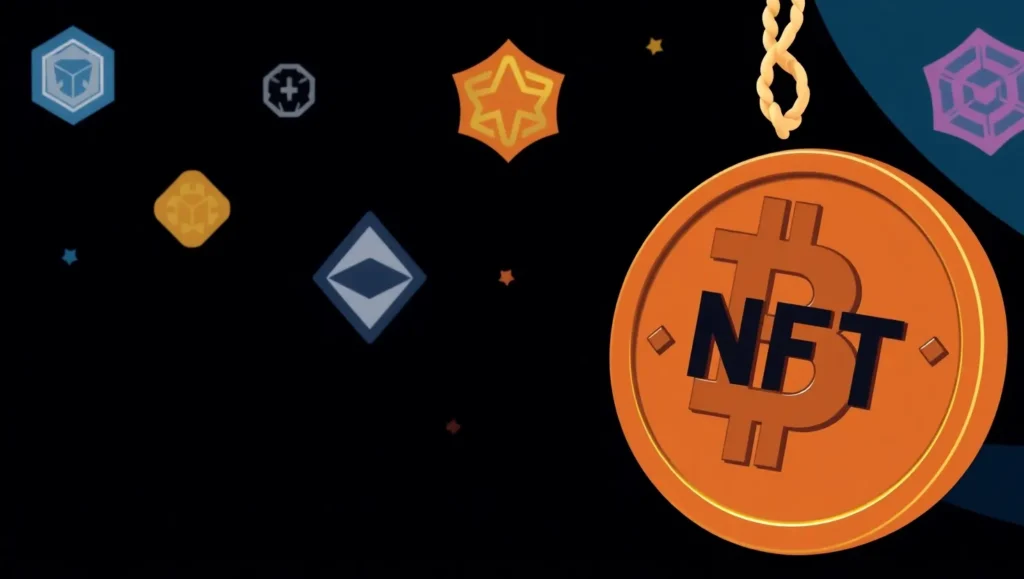NFTs have blurred the lines between digital and physical assets. Haven’t they?
While many people still find the concept of non-fungible tokens a bit baffling, one important question stands out: what makes an NFT valuable?
Traditional investors often look to tangible assets like gold and real estate, but the steep prices of some of the most expensive NFTs leave them baffled. Why would a digital asset, which seems to lack physical value, boasts such high prices? Unlike luxury goods or rare metals, NFTs need to be assessed differently despite having unique qualities that make them valuable. Just as with other forms of art, NFTs have distinct artistic attributes and advantages that justify their status as worthwhile investments.
The value of an NFT is determined by a variety of factors, which we’ll explore momentarily. However, the vastness of the marketplace and the success stories of prominent artists serve to reinforce the idea that NFTs can indeed hold significant value. Their growth potential, alongside various aspects of the NFT market, can lead to successful investment opportunities.
This article will take a deep dive into the intricate world of NFTs, shining a light on the key elements that contribute to their soaring prices and enduring worth.
Understanding the value of an NFT
Often, when people think of NFTs, they picture digital art or, perhaps, whimsical digital images of apes popular on social media. However, the reality is much more complex. The value of an NFT isn’t fixed; it hinges on a mix of various factors.
Essentially, the worth of an NFT relates more to the significance and message it conveys rather than any inherent value. So, what determines its worth? Ultimately, it’s the perception people have of that NFT. Several factors can shape that perception, including:
1. Uniqueness and Scarcity
Uniqueness and scarcity are two key properties that can drive value. When something is scarce, it often feels more special, prompting people to pay a premium for it. The allure of owning something that few others can claim resonates with buyers, similar to why luxury goods are sought after. Hence, the value of an NFT can hinge heavily on its uniqueness. Creativity and new ideas are also highly valued, discussing what makes an NFT valuable, so an NFT that showcases something innovative and original holds greater potential for worth. The concepts of scarcity and exclusivity are pivotal here—when demand increases for something rare, its value tends to rise. Artists can enhance this sense of exclusivity by creating limited-edition collections.
1. Ownership and Authenticity
It’s hard to deny the beauty of digital art. While the digital realm has undeniable aesthetic appeal, some people struggle to see value in it since anyone can download a file online. This concern is legitimate: how can an asset be considered valuable if it’s easily obtainable by anyone? However, with the advent of NFTs and blockchain technology, this concern has been addressed. An NFT’s value now extends far beyond being just another digital file. The owner of an NFT holds exclusive rights and access that no one else does.
3. Utility and Access
Beyond aesthetic appeal, the utility of an NFT plays a significant role in its value. NFTs can offer various benefits to their owners, and here are a few examples:
– Physical Utilities: Some artists mint NFTs based on physical artworks like paintings or sculptures. When they sell the NFT, they often provide the buyer with the physical piece as well. This tangibility adds to the NFT’s value.
– Access and Membership: NFTs can grant holders exclusive access to events, communities, or future projects. For instance, some musicians offer backstage passes or concert tickets to their NFT holders.
– Decentralized Governance: Certain NFTs allow multiple investors to buy in and, in return, grant voting rights in a decentralized autonomous organization (DAO). This feature empowers holders to participate in decision-making processes.- In-Game Assets: NFTs can represent unique in-game items, characters, or virtual worlds, enhancing the gaming experience for players.
4. Liquidity
When assessing what makes an NFT valuable, liquidity is crucial. A higher liquidity level typically points to a higher value. An asset is considered liquid if you can easily sell it without significant loss.
5. Extrinsic Factors
Beyond the main characteristics inherent to the NFT itself, there are several external factors that can affect its value. These are often tied to the artist, the community surrounding the NFT, and other related aspects rather than the NFT itself.
6. Artist Reputation
The clout that comes with an artist’s name greatly impacts the value of their NFTs. Even if two artists create pieces with similar inherent value, buyers are often drawn to the work of the more renowned artist. This cultural tendency often leads people to prioritize fame over actual artistic merit, making purchases from well-known artists a potentially sound investment. So, when pondering what makes an NFT valuable, one of the first considerations is the artist behind it.
7. Cultural Significance
NFTs that resonate with cultural values or societal concerns are more likely to garner attention. They tend to perform better when aligned with current trends, as art often carries cultural weight. If an NFT reflects contemporary ideas, it’s more likely to capture interest and, consequently, increase in value.
8. Underlying Asset Value
All NFTs come with an intrinsic value that is distinct from their other attributes, considering what makes an NFT valuable. This value is tied to the original file saved on the blockchain from which the NFT is derived. Without that underlying asset, does the NFT hold value? Would you pay the same amount if the original file were a physical piece of art instead of a digital token? The value of an NFT is also relative to its underlying asset.
9. Historical Significance
The historical context of an NFT can play a vital role in determining its worth. Was it part of a significant cultural movement or event? Did the artist use that NFT to convey important ideas to society? Has it ever been owned by a celebrity or involved in notable events? All these considerations contribute to an NFT’s historical significance, which can boost its value.
10. Technological Innovations
Some NFTs showcase technological advancements that hint at future developments. These NFTs serve as reminders of what’s to come, and people’s curiosity about the future can positively impact their value.
11. Special Moments
Certain NFTs transcend art and investment—they represent cherished memories. Whether it’s sports NFTs, celebrity NFTs, or film-related NFTs, those that evoke special moments tend to hold added significance and value for individuals.
12. Community and Engagement
An active community and engagement with fans can greatly enhance an NFT’s value. A strong community attracts more potential buyers and increases liquidity. High trading volumes and consistent demand on secondary marketplaces often stem from robust community involvement.
13. Social Media Presence and Social Proof
A strong social media presence and collaborations with influencers can elevate the popularity of an NFT. Media attention and social acceptance play essential roles in indicating its value.
Market Value vs. Intrinsic Value
It’s important to note that an NFT’s market value may not accurately reflect its intrinsic value. The market value is influenced by many factors we’ve discussed, most notably market demand. When demand surges for an NFT, it can create hype and lead to irrational purchasing decisions. Therefore, potential buyers should exercise caution and assess the intrinsic value of an NFT rather than simply tracking its market price.
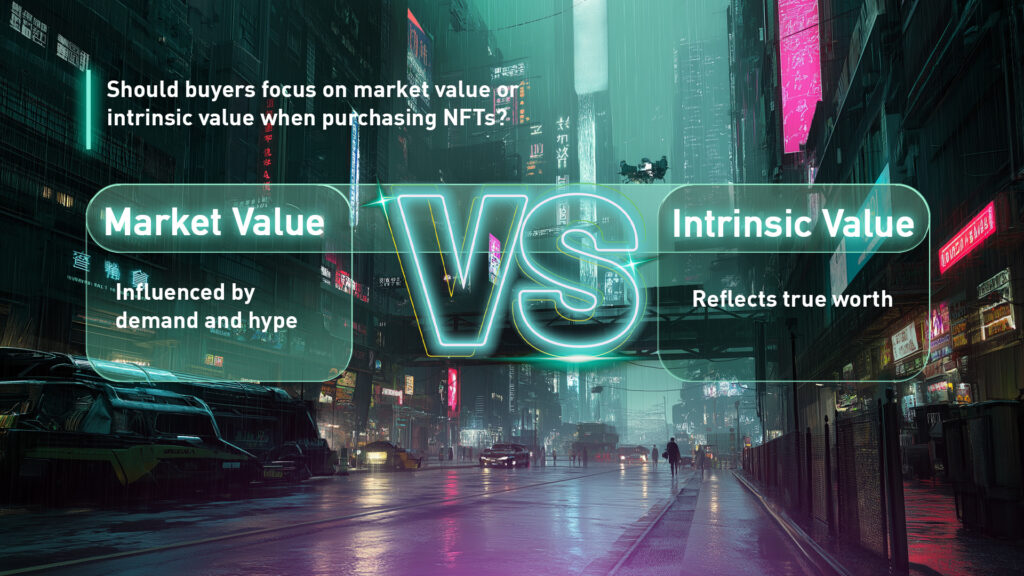
When NFTs Got Valuable BIG TIME
1. Scarcity Meets Provable Ownership: The $69.3 Million Blueprint
The 2021 Christie’s auction of Beeple’s Everydays: The First 5000 Days shattered records, selling for $69.3 million—a figure that surpassed works by Picasso and Warhol. This sale was about more than just art:
- Provenance Revolution: Blockchain’s immutable ledger solved the authenticity crisis in digital art overnight, allowing 58% of bidders to be millennials new to Christie’s.
Institutional Validation: NFT fund Metapurse later acquired the piece, tokenizing it into 4,000 B20 tokens to democratize ownership of this “digital Mona Lisa.”
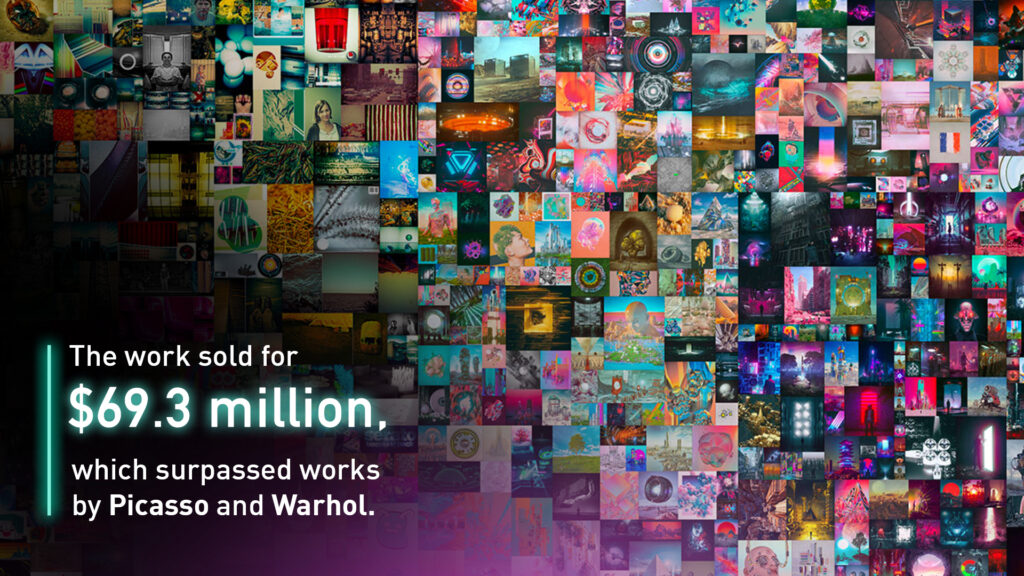
2. Market Momentum: From $18.5 Billion to Volatility
The NFT market exploded from $32 million in 2020 to $18.5 billion in 2021—an astonishing 57,700% surge. Key milestones included:
- Peak Frenzy: January 2022 saw $4.5 billion in monthly sales, just shy of the August 2021 all-time high of $4.9 billion.
Cooling Phase: By 2024, OpenSea’s weekly volumes plummeted 98%, dropping from $1 billion in 2022 to $20 million, while competitors like Blur and Magic Eden gained traction.
3. Liquidity Paradox: Trading vs. Holding
NFTs promised liquidity for previously illiquid assets, but the reality is more complex:
- Concentrated Activity: 85% of NFT transactions are driven by the top 10% of traders, resulting in volatile price swings.
Platform Wars: Despite OpenSea’s brand recognition (holding a 16% market share in 2024), its lack of incentives—such as Blur’s zero fees or Magic Eden’s multi-chain support—eroded its dominance.
4. Utility Beyond JPEGs: The Silent Value Drivers
- Community as Equity: Metapurse’s B20 token transformed a single NFT into a tradable DAO, blending art ownership with governance rights.
Mainstream Bridges: Coinbase’s NFT marketplace waitlist attracted 3.7 million users in 2022, while partnerships with Mastercard enabled purchases without the need for cryptocurrency.
5. The Speculation Trap
While NFTs welcomed 910,611 unique buyers in January 2022 (compared to 29,581 in 2021), the market’s cooldown in 2024 reveals harsh realities:
- Meme Coin Competition: NFT volumes dropped 92%, plummeting from $1.4 billion per week in 2022 to $115 million by 2024, as traders pursued quicker returns.
Survival of the Fittest: Platforms are now competing based on blockchain diversity (supporting Solana and Bitcoin) and creator royalties—a battleground where OpenSea’s optional fees have alienated artists.
Conclusion
Numerous factors come into play when determining the value of an NFT. Keep in mind that various parameters can influence its worth, and the price tag alone doesn’t dictate its real value. A good NFT should possess vital qualities such as uniqueness, authenticity, liquidity, and artistic value. However, market demand and other discussed elements can significantly sway the price. Ultimately, the value of an NFT remains subjective, shaped by individual perspectives, needs, and motivations. For some, the value lies in artistic attributes or cultural relevance, while others may focus on an NFT’s utilities.
The key takeaway is that purchasers are influenced by their own goals; an NFT’s worth is shaped by its ability to meet people’s expectations. When an NFT aligns with the values of a broader community, it naturally attracts more demand and, consequently, greater value.
How can I know if an NFT is overpriced?
You should first check the main properties of the NFT to see of it is suitable to improve in the market. Then check its intrinsic value to see if its price is just influenced by the hype or if the value of the NFT is high enough to fetch a high price.
Is it hard to sell NFTs?
Yes, most people who invest in this market are professionals who have enough knowledge to create advertisement campaigns or they already have a community of audiences. So its very hard to sell an NFT for an average person without related experiences and skills.
